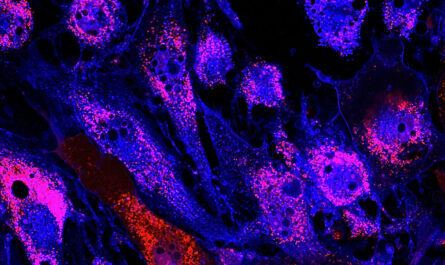
Gas chromatography (GC) is an analytical technique that is used for separating and analyzing compounds that can be vaporized without decomposition. It relies on the partitioning of compounds between a mobile gas phase and a stationary liquid or solid phase to allow separation and analysis of compounds within a sample. Gas chromatography has become a widely used tool in many industries and fields of research due to its versatility, high resolution, accuracy, reproducibility and high sample throughput capabilities. This article will explore the principles and applications of GC to demonstrate why it has become an indispensable analytical technique.
Principles of Gas Chromatography
Gas chromatography works based on the principle that different compounds travel through a column at different rates depending on their chemical and physical properties as well as their interaction with the column. The basic components of a GC system include an injector, column and detector. In the injector, the sample mixture is vaporized and carried by an inert gas called the carrier gas into the column. The stationary phase coated inside the column walls interacts differently with the different analytes based on characteristics like boiling point, polarity and molecular size. Less interactive compounds pass through quickly while more interactive compounds remain in the column for longer, resulting in separation. The separated analytes then pass through a detector which detects and measures them and produces a chromatogram displaying the peaks representing each separated compound.
Types of Columns and Stationary Phases
The stationary phase coated on the column inner walls plays a key role in the separation of analytes. Common types of stationary phases include liquid and solid based phases. Liquid phases include silicone oils and silicone polymers while solid phase include polymers, bonded liquid phases and porous polymers. The choice of stationary phase depends on the type of sample being analyzed. For example, non-polar phases like 5% phenyl methyl silicone are suited for separation of hydrocarbons, while polar phases like polyethylene glycol are used for separation of amines, alcohols, acids etc. Column types include capillary, packed and open tubular columns depending on whether the stationary phase coats the inside walls or is packed into the column.
Applications
Gas chromatography finds wide applications due to the variety of stationary phases and columns available. Some key application areas are discussed below:
– Food analysis: GC is widely used for analysis of flavor and fragrance compounds in food as well as detection of contaminants, toxic chemicals, adulteration in foods.
– Environmental analysis: It is used for analysis of air, water and soil samples to detect pollutants, pesticides and toxins. GC-MS is commonly employed to identify unknown compounds.
– Petrochemical analysis: Applications include analysis of petroleum, petroleum products, crude oil, natural gas and more to determine composition and monitor processes.
– Pharmaceutical analysis: GC is employed for quality control testing of drugs and excipients, identification of impurities during drug synthesis, dissolution or stability testing.
– Forensic science: Applications encompass fingerprinting of evidence like drugs, explosives, arson residues, detection of intoxicating compounds, toxins in postmortem samples and more.
– Clinical analysis: GC finds use in analysis of breath, urine and blood samples for clinical diagnosis by detecting biomarker compounds.
– Flavor and fragrance industry: It is used for both quantitative and qualitative analysis of complex mixtures of aroma compounds.
Detection Methods
Some common detectors used in GC include flame ionization detector (FID), thermal conductivity detector (TCD), electron capture detector (ECD), nitrogen-phosphorous detector (NPD) and mass spectrometer (MS). The choice of detector depends on the type of analytes and information required. For example, FID is well suited for detection of hydrocarbons but not suited for thermally-labile compounds. ECD provides high sensitivity for analytes like pesticides but with lower sensitivity for hydrocarbons. MS coupled to GC (GC-MS) provides identification of unknown compounds based on fragmentation patterns and molecular weight besides quantitative analysis.
Advances and Future Applications
Advances in GC technology include development of fast GC systems having shorter analysis runtime and higher sample throughputs. Use of multidimensional GC (GCXGC) allows further resolution of analytes that co-elute on single dimension columns. Microfluidic GC chips enable portable, low cost analysis. Coupling to techniques like pyrolysis (Py-GC) enables analysis of high molecular weight polymers. Increased use of GC-MS and GCxGC-MS techniques as well as coupled separation techniques like LC-GC will drive new applications in fields like metabolomics, proteomics and food authentication. Portable GC systems also allow on-site and in-field analysis. Overall, gas chromatography has become a mainstay for various quantitative and qualitative applications due to its precision, reproducibility and versatility which will continue to expand its presence in various industries and research fields.
Conclusion
In conclusion, gas chromatography is a powerful and robust analytical technique which works on the principle of separation of analytes based on their vaporization, distribution between mobile and stationary phases and detection using various detectors. Versatility of columns, stationary phases and detectors coupled with high resolution capabilities have led to widespread applications of GC in fields ranging from environmental chemistry to food, pharmaceutical, petrochemical and clinical analysis. Continuing technological advances promise to introduce new capabilities and enable new applications of this indispensable separation and quantitative analysis technique across many domains.
*Note:
1. Source: Coherent Market Insights, Public sources, Desk research
2. We have leveraged AI tools to mine information and compile it


